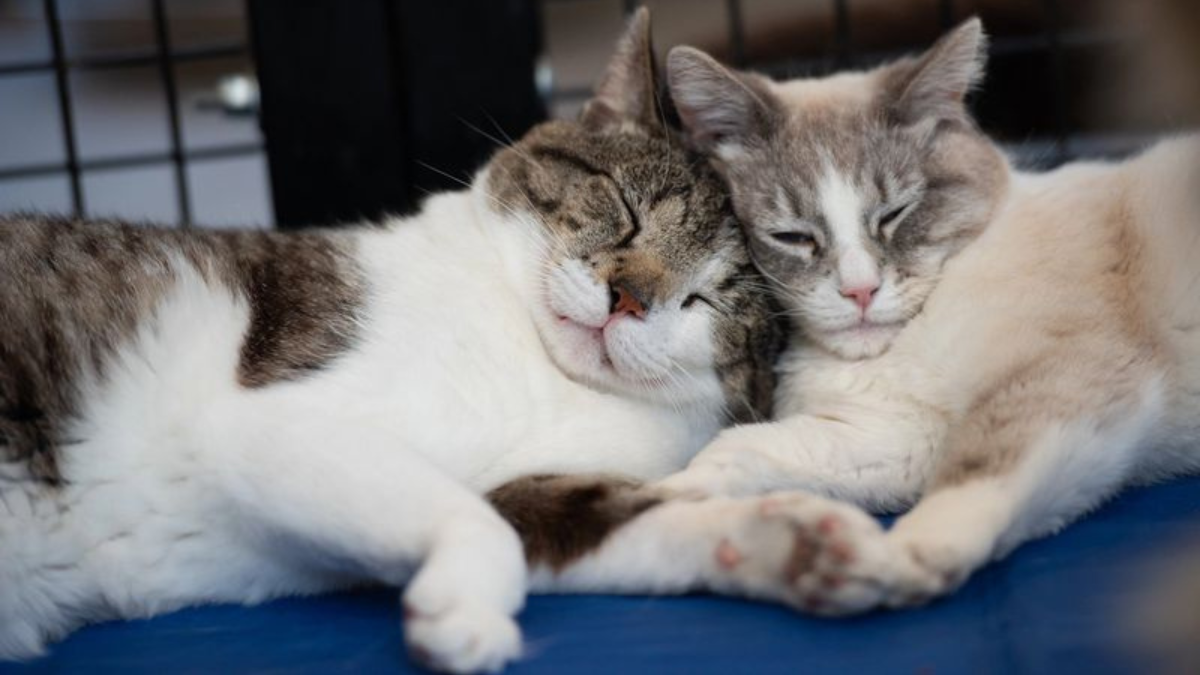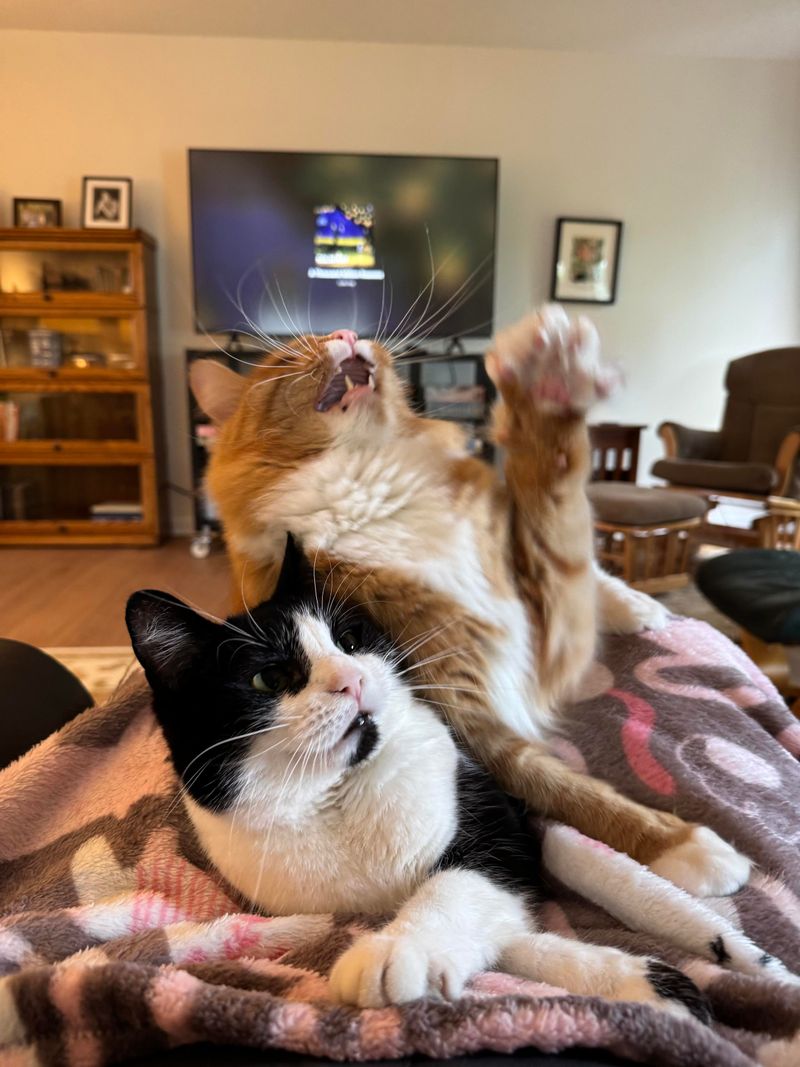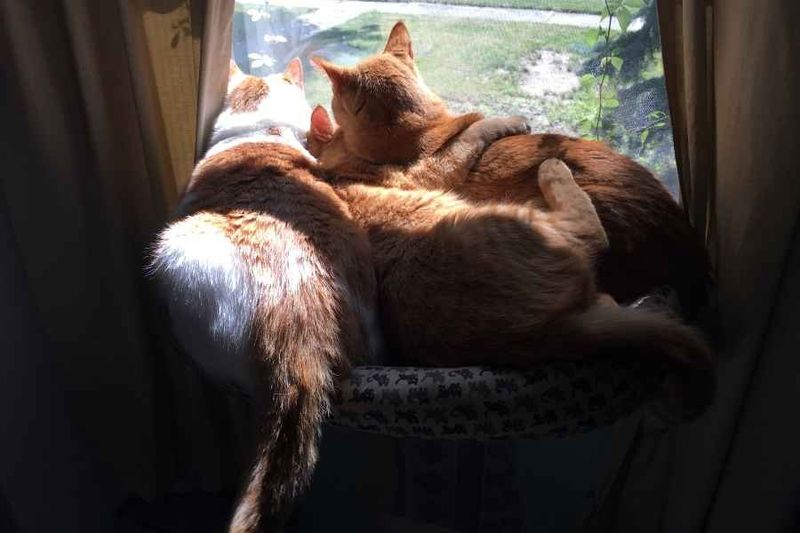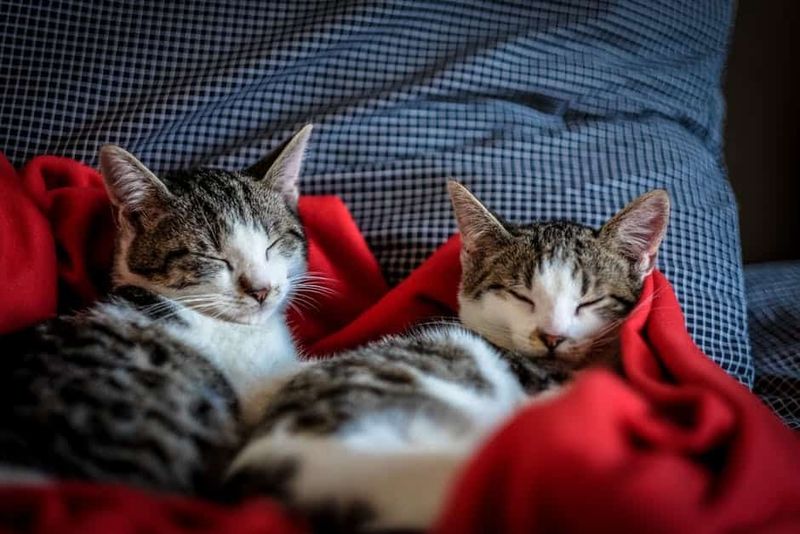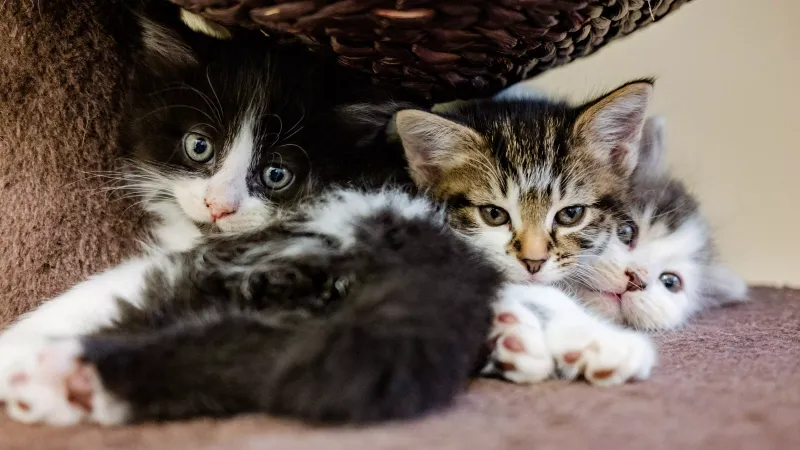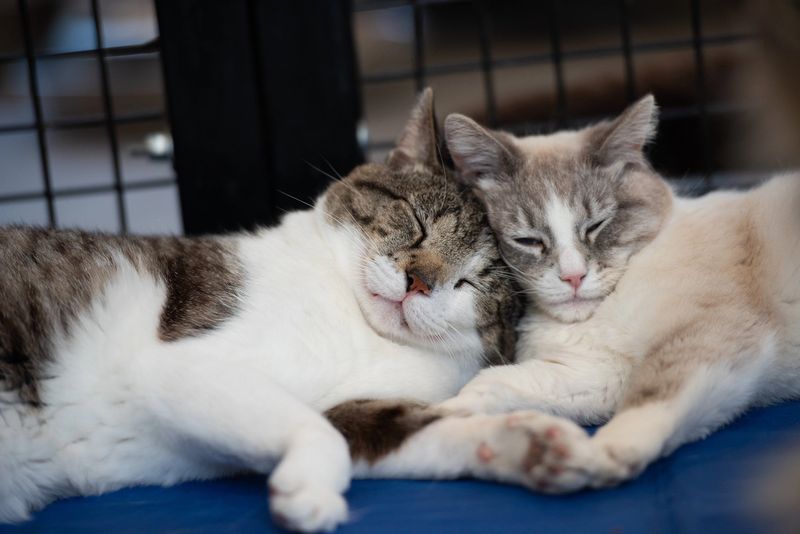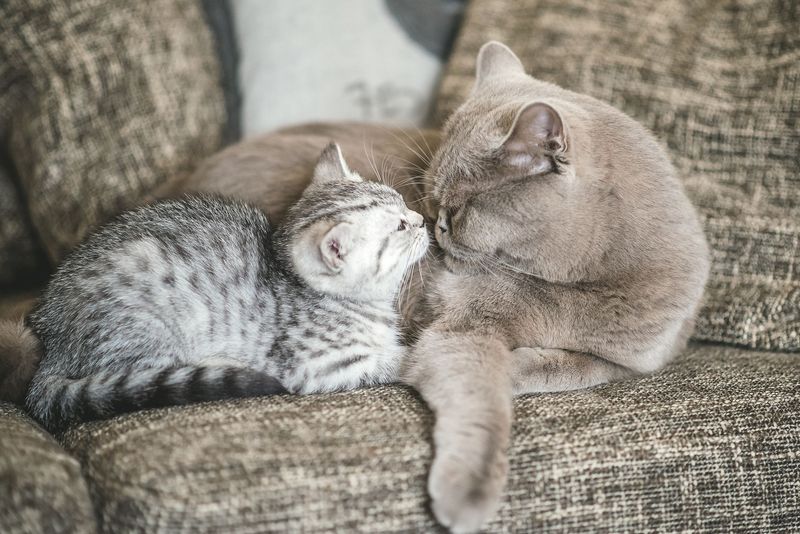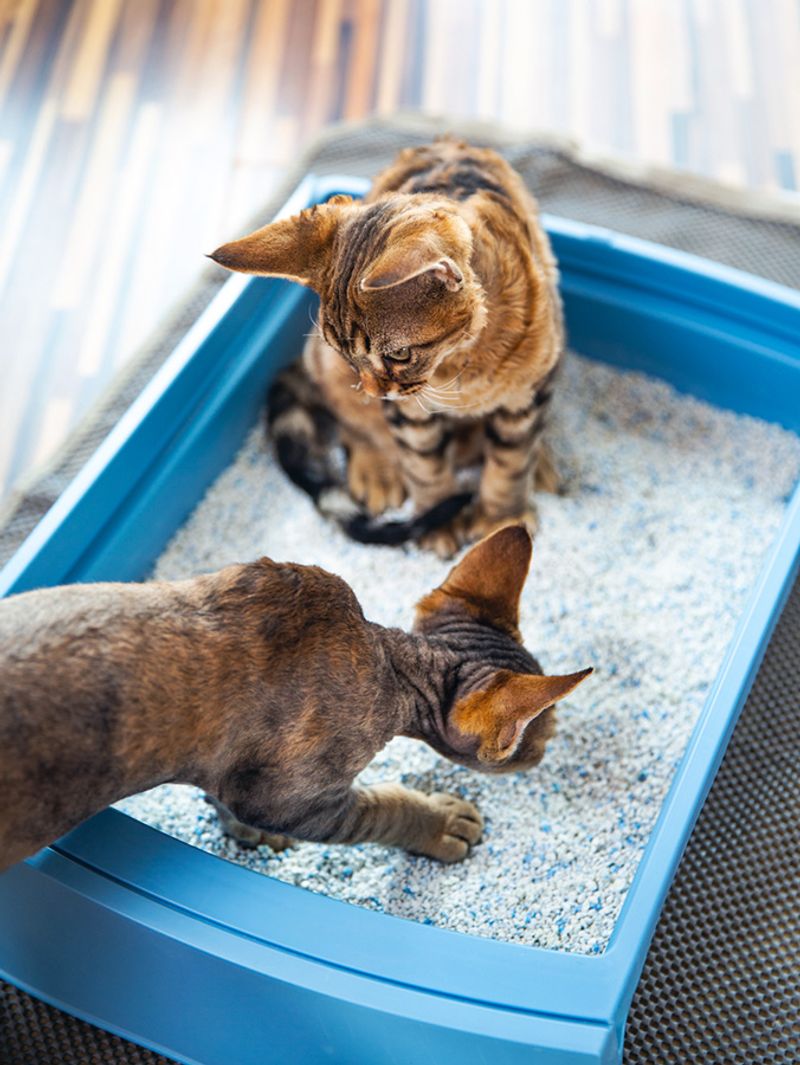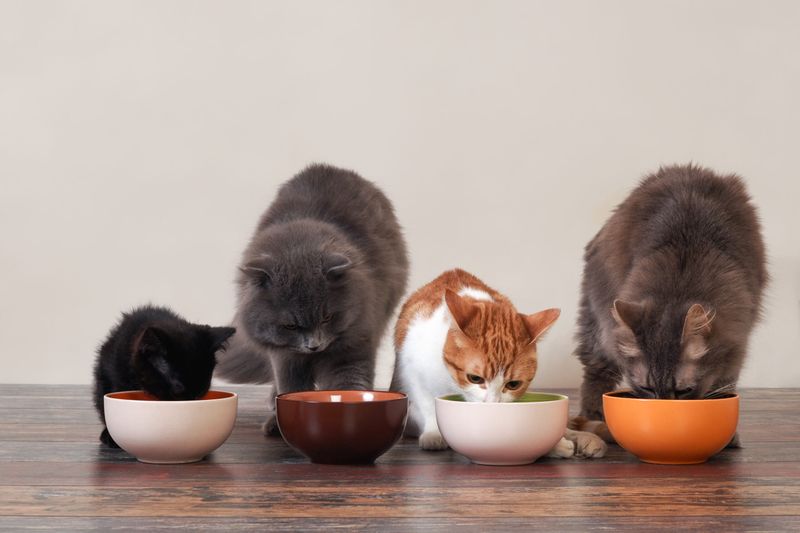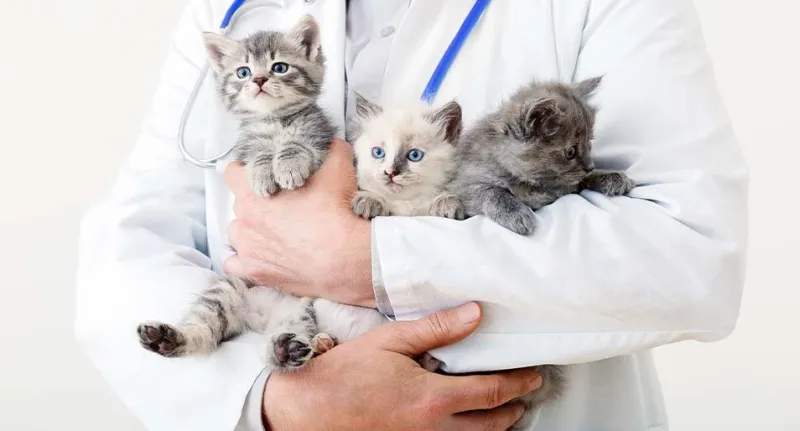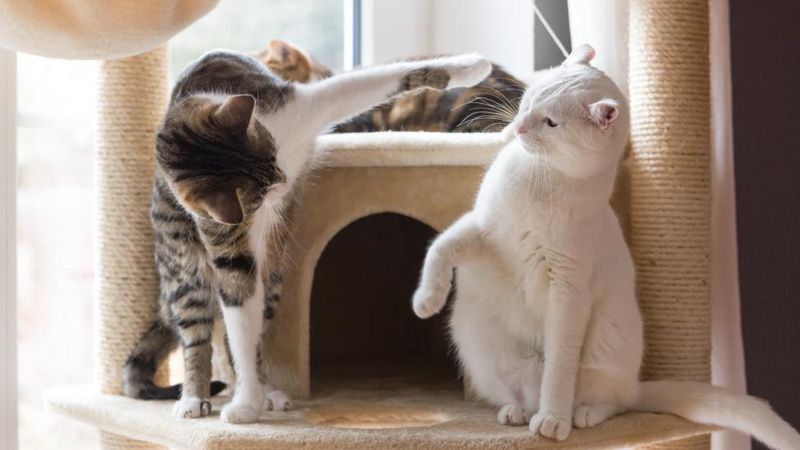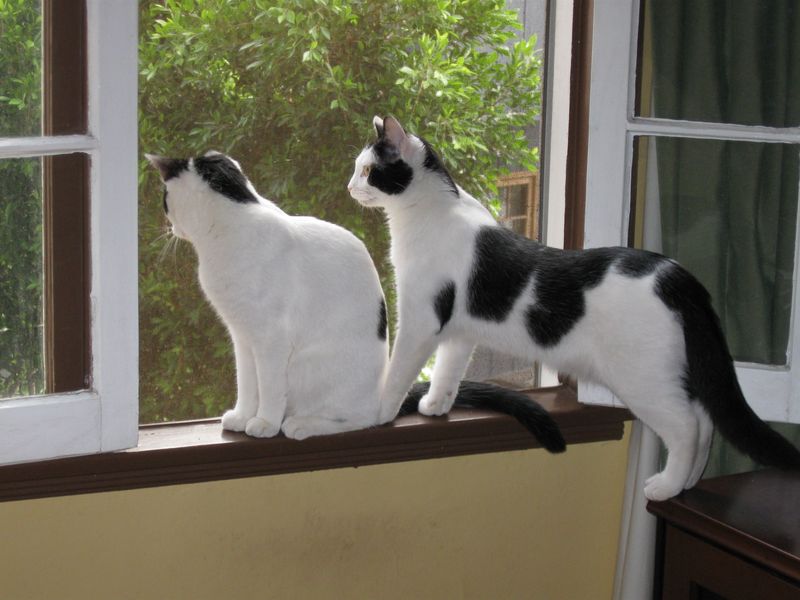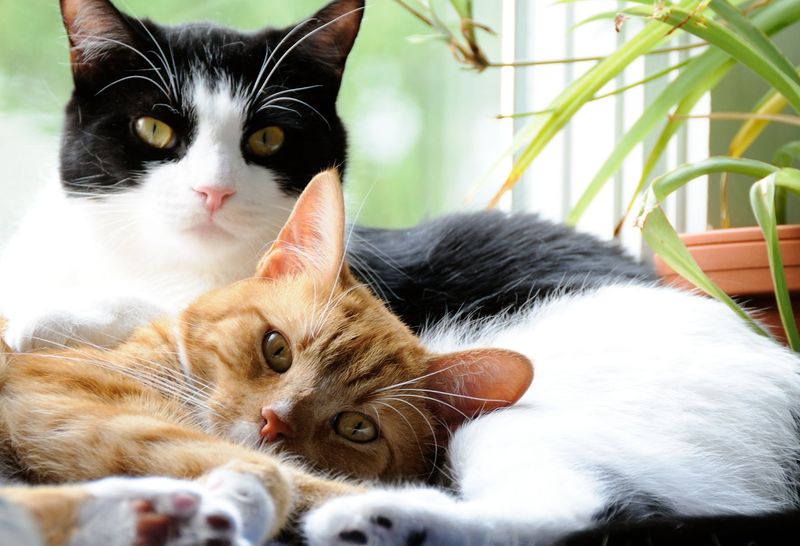📖 Table of Content:
- 1. Constant Entertainment
- 2. Built-in Companionship
- 3. Double the Cuddles
- 4. Unique Personalities Shine
- 5. Shared Responsibility
- 6. Learning from Each Other
- 1. Litter Box Challenges
- 2. Food Management Complications
- 3. Doubled Veterinary Expenses
- 4. Territorial Disputes
- 5. Vacation Planning Headaches
- 6. Fur Everywhere Multiplied
Having one cat brings joy to many households, but adding a second (or third) feline friend changes everything! Multi-cat homes create unique dynamics that transform both your living space and daily routines. Whether you’re considering expanding your cat family or already juggling several furballs, understanding both the rewards and challenges helps create harmony in your home.
1. Constant Entertainment
Cats playing together create an endless show of acrobatics, wrestling matches, and silly antics. Your living room transforms into a feline circus with no admission fee required! Two cats will chase each other up and down hallways, ambush from behind furniture, and create games you’d never imagine.
Their synchronized zoomies at 3 AM might wake you up, but their playful bond is worth it. Even older cats maintain more youthful energy when they have a buddy, extending their playful years far longer than solo cats typically enjoy.
2. Built-in Companionship
Multiple cats provide each other with friendship when you’re away. Rather than waiting alone for your return, they snuggle, groom, and play together throughout the day. Cat companions help each other through changes like moving to a new home or welcoming a baby.
Their social bond creates security during stressful times when you can’t give extra attention. Many multi-cat owners report less separation anxiety and destructive behaviors compared to single-cat households. Feline friends comfort each other during thunderstorms, construction noise, or when the dreaded vacuum appears.
3. Double the Cuddles
Cold winter nights become cozy with multiple warm cat bodies snuggled against you. Their combined purring creates a soothing soundtrack that melts away daily stress.
Each cat develops unique cuddling preferences – one might claim your lap while another nestles against your neck or feet. Together, they create a perfect weighted blanket of furry comfort. Multiple cats often take turns providing attention throughout the day. When one cat needs alone time, another steps in for cuddles, ensuring you’re never without feline affection when you need it most.
4. Unique Personalities Shine
Multi-cat households reveal how truly different each feline personality can be. One cat might be bold and adventurous while another remains shy and observant. Their contrasting traits create a balanced home ecosystem.
The social butterfly welcomes visitors while the cautious one watches from a distance, each handling situations in complementary ways. Cat personalities often emerge more clearly when they have feline companions. Behaviors that might remain hidden in a single-cat home become apparent through their interactions, giving you a deeper appreciation for each cat’s individual character.
5. Shared Responsibility
Naturally, cats take on different roles at home; some are experts at catching flies, others specialize in spotting spiders, working together like a pest-control team. They often divide territory in fascinating ways.
The kitchen counter might belong to the tabby while the windowsills are claimed by the calico, each monitoring their domain with dedication. Multiple cats take turns being on “alert duty” while others rest. This rotation system means someone is always monitoring the home for unexpected noises or movements, giving you extra pairs of eyes and ears around the clock.
6. Learning from Each Other
Cats teach each other valuable skills through observation and play. A kitten learns litter box habits faster by watching an older cat’s routine. Food preferences often spread through the group.
A hesitant eater might try new foods after seeing housemates enjoy them, expanding their palate beyond what you could accomplish alone. Social boundaries develop naturally in multi-cat homes. They learn appropriate play intensity, when to back off, and how to request space – all crucial feline social skills that a human caretaker simply cannot teach as effectively as another cat.
1. Litter Box Challenges
Managing multiple litter boxes becomes a daily puzzle. The general rule of one box per cat plus an extra means a three-cat household needs four boxes spread throughout your home. Some cats develop preferences for specific boxes or locations.
Just when you think you’ve found the perfect setup, one decides they’ll only use the upstairs box, while another prefers the downstairs. Cleaning frequency increases dramatically with multiple cats. What was once a quick daily scoop becomes a multiple-times-per-day necessity to prevent avoidance behaviors and keep your home smelling fresh.
2. Food Management Complications
Feeding multiple cats with different dietary needs creates mealtime chaos. One might require weight management food, while another needs kidney support, requiring separate feeding stations. Food stealing becomes an Olympic sport for some cats.
The slow, methodical eater often loses meals to the vacuum-style gulper without careful monitoring or physical barriers between dishes. Free-feeding becomes nearly impossible with multiple cats of different ages and metabolism rates. The younger, active cat might maintain perfect weight while the older, sedentary one gains steadily on the same feeding schedule, requiring individual portion control.
3. Doubled Veterinary Expenses
Annual wellness exams multiply with each additional cat. Two cats mean twice the vaccination costs, heartworm prevention, and routine bloodwork expenses. Emergency situations become financially complicated.
When both cats eat the same toxic plant or develop similar symptoms, you’re facing simultaneous diagnostic workups and treatments rather than spreading costs over time. Insurance premiums stack up quickly. While multi-pet discounts help somewhat, protecting all your cats with comprehensive coverage means a significant monthly expense that increases with each new feline family member.
4. Territorial Disputes
Cats naturally establish complex territory systems within your home. Doorways, hallways, and certain furniture pieces become strategic control points that can trigger confrontations. Resource guarding emerges even in otherwise friendly cats. Food bowls, favorite toys, and prime sleeping spots become contested areas requiring careful management to prevent conflicts.
Adding new items often disrupts the peace temporarily. A new cat tree or bed requires negotiation among residents, sometimes leading to hissing standoffs until new ownership rules are established through subtle feline diplomacy.
5. Vacation Planning Headaches
Finding cat sitters willing to manage multiple felines requires extensive searching. Many pet sitters charge additional fees per animal, doubling or tripling your vacation care expenses. Medication administration becomes particularly challenging for temporary caretakers.
When cats scatter in different hiding spots, giving prescribed treatments to the correct cat can overwhelm even well-meaning friends or family members. Boarding facilities often place limitations on multi-cat accommodations. Some require separate enclosures despite your cats being bonded, causing stress for cats accustomed to companionship during your absence.
6. Fur Everywhere Multiplied
Multiple cats create an exponential fur distribution throughout your home. Different coat types mean varied shedding patterns – one might release short, sticky fur while another contributes long, floating hair that forms tumbleweeds under furniture. Seasonal shedding becomes a year-round event.
Just as one cat completes their major coat blow, another begins, creating a never-ending cycle of fur management regardless of season. Cleaning tools multiply alongside your cats. Standard vacuum attachments no longer suffice, leading to an arsenal of specialized brushes, lint rollers, and fur-removal devices scattered throughout your home for emergency de-furring.
